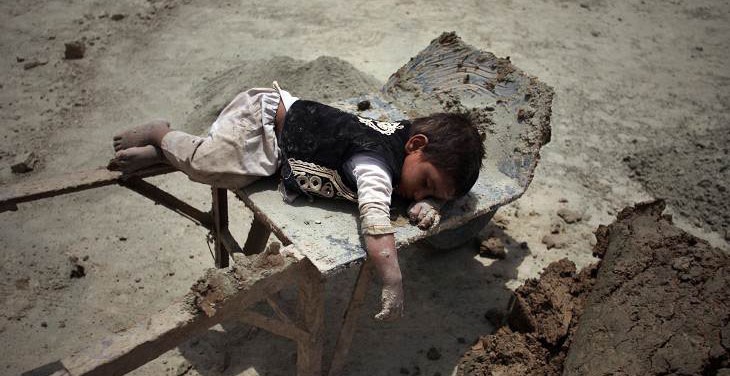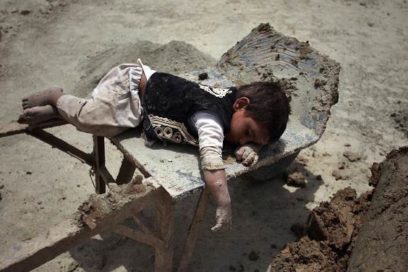 The existence of 168 million children as labor force is one of the causes and consequences of social inequality stressed by poverty. In the last years, this has substantially decreased in Latin America and the Caribbean. Despite of that, 12.5 million girls and boys are workers even in jobs that should be forbidden for them according to the Agreement No. 182 of the International Labor Organization (ILO).
The existence of 168 million children as labor force is one of the causes and consequences of social inequality stressed by poverty. In the last years, this has substantially decreased in Latin America and the Caribbean. Despite of that, 12.5 million girls and boys are workers even in jobs that should be forbidden for them according to the Agreement No. 182 of the International Labor Organization (ILO).
These children are mainly employed in agriculture; however, thousands of them work in other branches of great risk, like mining, garbage dumps, domestic work, fireworks factory and fishing.
Likewise, there are other indubitable worst way of children jobs like trade sexual exploitation, the trade of boys and girls as labor force, also their use in armed conflicts and traffic of drugs. These are particular problems, because they involve illegal activities: poaching and difficult to deal with.
Some are specific risks for the females, who are frequently vulnerable do to the current patriarchal social and cultural norms from Latin America and the Caribbean.
Brazil has the greatest challenge because it leads the list of children labor force in Latin America with about 14 million children forced to work to contribute to support the family, followed by Peru, Mexico and Colombia where there is the highest number of minors who work at a regional level, most of the time without remuneration for their jobs, in similar conditions to slavery.
This phenomenon also affects Bolivia, especially for the presence of natives, where children start working at early ages, because they consider that attending school is a risk of “cultural assimilation”.
Nevertheless, they are giving important steps in this area in the prevention and eradication of children as labor force in agriculture. In sugar branch, El Salvador, for instance, the government, the Association of Sugar Cane Production and the ILO have joined to eliminate children labor force in this branch by a sensitization campaign, the improvement of the teaching services in professional training and the application of mechanisms of communitarian surveillance.
The Social Forum to decrease employment of children was created in Ecuador in 2005; in 2013, about 38,000 children and adolescents were separated as labor force. This situation decreased in this country in from 8 percent in 2007 to 2.6 percent in 2013 in ages between 5 to 14 years old.
ILO and FAO (Food and Agriculture Organization) said the Andean region has the 61.5 percent of children who work in the country, followed by Middle America (47.7) and the Southern Cone (38.4). Meanwhile, the harvests of coffee, cacao, sugar, soy, fruits and vegetables is among the most attended by kids and adolescents.
Latin America and the Caribbean are devoted to eliminate the worst use of children as labor force in 2016 and do it completely in 2020. However, at the current pace, these goals will not be achieved.
So far, it is being possible to reduce in 7.5 million the number of infants in this situation, considered an important achievement, although ILO has highlighted that if they continue in this pace, about 40 years will be needed to eradicate it.
The Regional Initiative of Latin America and the Caribbean free of Infant Labor Force was born in 2014 in the III Global Conference on Infant Labor Force in Lima, Peru, where several countries shared their worries on the slow advances, and they proposed this would be “the first region developing to get free of infant labor force.”
This decision has as mandate to speed actions of prevention and discontinuation of this phenomenon, and it includes a series of measures of action and identification of this practice.
“The persistence of this situation, especially in the worst forms that is the factor that deepens social and economic inequity and vulnerability, the declaration subscribed in Lima says.


